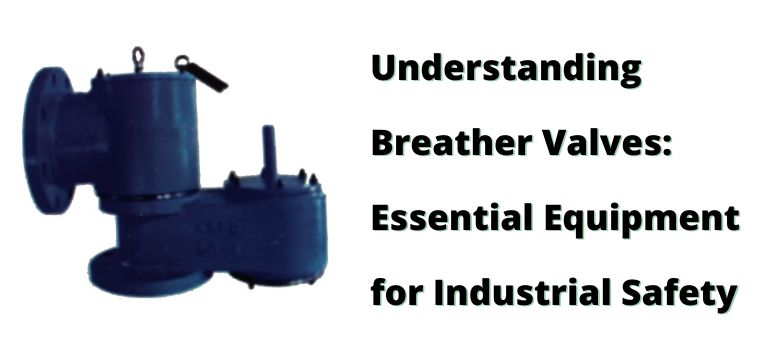Introduction
Welcome to our comprehensive guide on breather valves, a critical component in industrial applications for ensuring safety, reliability, and efficiency. In this article, we will explore the fundamental aspects of breather valves, their working principles, and the various benefits they offer in industrial settings. Join us as we delve into the world of breather valves and their significance in safeguarding equipment and processes.
What are Breather Valves?
Breather valves, also known as pressure-vacuum relief valves or conservation vents, are vital devices used to regulate pressure changes within enclosed systems or storage tanks. They serve a crucial role in maintaining the integrity and stability of industrial equipment by preventing excessive pressure build-up or vacuum formation. These valves are designed to allow the controlled flow of gases, vapors, or air in and out of the system, thus ensuring optimal operating conditions and preventing potential hazards.
Get Breather Valves with different ranges in India, we are a Fidicon Devices India manufacturer, supplier, and exporter in India, contact us for breather valves.
Working Principles of Breather Valves
Breather valves operate on the principle of pressure differentials. They consist of a valve body, a spring-loaded pallet, and a sealing mechanism. The valve is designed to open or close based on the pressure variations within the system it is installed on.
When the internal pressure exceeds the set limit, the valve’s pallet is lifted, allowing the release of excess pressure. This prevents the equipment or tank from getting over-pressurized, which could lead to structural damage or rupture. Conversely, when the internal pressure drops below a certain threshold, the valve opens in the opposite direction, facilitating the inflow of air or gas to prevent the formation of damaging vacuums.
Importance of Breather Valves in Industrial Applications
Breather valves play a crucial role in ensuring the safety and longevity of industrial equipment and processes. Here are some key reasons why breather valves are essential components in various industries:
1. Pressure Regulation and Equipment Protection
By maintaining the pressure within predetermined limits, breather valves protect industrial equipment from potential damage caused by excessive pressure or vacuum formation. This safeguards vital components such as storage tanks, pipelines, reactors, and other process equipment, ensuring their reliability and longevity.
2. Safety Assurance
Breather valves are integral to maintaining a safe working environment in industries where the release or containment of hazardous gases, vapors, or flammable materials is involved. These valves prevent the accumulation of dangerous pressure levels, reducing the risk of accidents, explosions, or equipment failures.
3. Environmental Compliance
In industries that handle volatile or harmful substances, breather valves help maintain environmental compliance by preventing the release of pollutants into the atmosphere. These valves ensure that any vented gases are directed to proper disposal systems or treatment facilities, minimizing environmental impact.
4. Operational Efficiency
Properly sized and calibrated breather valves enhance the operational efficiency of industrial processes. They allow for controlled pressure relief, ensuring optimal conditions for various operations such as storage, transportation, and chemical reactions. By preventing unnecessary pressure fluctuations, breather valves help improve overall productivity and reduce downtime.
Choosing the Right Breather Valve
Selecting the appropriate breather valve for a specific application is crucial to ensure optimal performance and safety. Consider the following factors when choosing a breather valve:
1. Pressure Ratings and Capacity
Evaluate the required pressure ratings and capacity based on the anticipated operating conditions and the system’s pressure characteristics. Ensure that the breather valve is capable of handling the maximum pressure differentials while effectively venting excess pressure or allowing for the inflow of air or gas.
2. Material Compatibility
Consider the compatibility of the valve’s materials with the process fluids, gases, or vapors it will come into contact with. Ensure that the valve’s construction materials are resistant to corrosion, chemical reactions, and other potential sources of degradation.
3. Certifications and Standards
Verify that the breather valve meets industry standards and regulatory requirements, such as those set by recognized organizations like the American Petroleum Institute (API), the American Society of Mechanical Engineers (ASME), or other relevant authorities. Certifications and compliance with these standards ensure the valve’s reliability and performance.
Conclusion
Breather valves are essential components in industrial applications, providing critical pressure regulation and equipment protection. By understanding their working principles and the benefits they offer, industries can ensure operational safety, maintain environmental compliance, and optimize their processes. When choosing breather valves, consider factors such as pressure ratings, material compatibility, and adherence to industry standards. By prioritizing the proper selection and installation of breather valves, industries can enhance safety, efficiency, and reliability in their operations.
